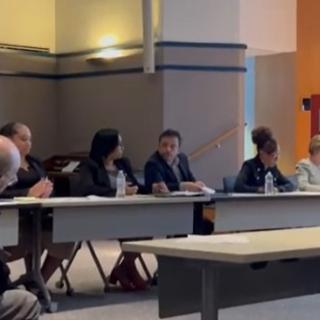Between 2006 to 2012, in the far-west zip code of 43228, each and every person accounted for 3,300 oxycodones or hydrocodones distributed. 170 million pills in total for roughly 50,000 Columbus residents.
The 43228 ranks number one in the state for the total amount of opioids distributed over those six years, and number three for pills per person, this according to data recently made public by the US Drug Enforcement Administration (DEA). Across the entire state 3.4 billion opioids were distributed over this time.
These numbers, this stomach-turning data, was voluntarily submitted by drug companies from 2006 to 2012 to the federal government’s ARCOS database or Automated Reports and Consolidated Ordering System. This begs the question, did federal law enforcement know the scope of what was happening? It was their database after all.
Following continued pressure by journalists, the data was recently made public by US District Judge Dan Polster of Cleveland. Polster is presiding over 2,000 lawsuits against drug manufacturers and distributors, which of course includes Cardinal Health of Dublin, the state’s largest distributor of opioids.
Judge Polster initially denied the data to journalists and it took a federal appeals court to finally pry it open. Why he held back on this data has Freep and many others bewildered.
What’s more, how were 170 million pills distributed to 43228? A zipcode which borders Hilliard, Galloway and Upper Arlington, but doesn’t include Westgate or the Hilltop. It is a complicated question with a complicated answer that’s gone unanswered. An answer it appears no one wants to pin down because it could blame a variety of high-profiled actors.
That said, it is true that pill mills and addicts who made poor decisions are certainly part of the problem. But an interview with DEA spokesperson Brenda Carreno was very revealing.
Carreno said yes, they were aware there was data showing millions of pills were suspiciously being distributed, but they had reasons to keep the data a secret and, apparently, not act on it.
“Much of the data is proprietary by the companies and they wouldn’t share it with us if we didn’t keep it confidential,” said Carreno. “We have ongoing investigations that we use this data for, and we don’t like to reveal means and methods.”
The data release has created a hot potato of sorts amongst opioid manufacturers, distributors and law enforcement.
Carreno told us this, “The drug companies are saying, ‘You (the DEA) had all this data, why weren’t you more aggressive in stopping us? You should have been more proactive, and this is all your fault.’”
Cardinal Health and their corporate ilk have a lot of gall.
Nevertheless, the Freep believes the blame for Ohio’s opioid epidemic can be spread around like manure over a field already covered by bull poop. Look no further than Cardinal Health, which reported $256 million in profits for 2018, and their treatment by law enforcement over the previous decade as thousands of addicts lost their lives.
In 2008, Cardinal Health paid a $34 million penalty to the DEA for failing to report thousands of suspicious orders of hydrocodone. In 2012 they paid another fine for shipping 12 million oxycodones to only four Florida pharmacies (ie, pill mills). And in 2016 the DEA again busted Cardinal Health for shipping suspicious amounts of opioids to the same Florida distribution center implicated in 2012.
During much of this time the Ohio Attorney General’s Office was run by Gov. Mike DeWine. Ohio AG’s office has ongoing civil suits in the works against Cardinal Health and others, but have civil suits and fines put an end to this epidemic?
Not in the least, but perhaps arrests will. Two top officials from Springboro, Ohio-based opioid distributor Miami-Luken were arrested and federally indicted in July.
Will more arrests follow?
Ohio AG Spokesperson David O’Neil told the Free Press the AG’s office “does not have statutory authority to initiate a criminal prosecution for these types of acts. That authority lies with Ohio’s county prosecuting attorneys. The Attorney General does offer prosecution assistance on request.”
We asked: Has the AG’s office offered to help or tried to persuade Franklin County prosecutors to investigate and prosecute Cardinal Health and the family that owns it, the Walter family, one of the richest – if not richest family – in Central Ohio?
“It would not be appropriate for the Attorney General’s Office to answer these types of questions, as they extend to matters beyond the office’s authority,” responded O’Neil.
Sounds like the potato is too hot to handle, especially when the richest family in Central Ohio is involved.
While blame for the epidemic gets tossed around, those bearing the heat and stress of this epidemic are the families of the deceased, first-responders armed with Narcan, and those on the frontlines of the state’s foster care crisis.
Take what the Public Children Services Association of Ohio (PCSAO) has seen over the previous decade. The PCSAO is the lobbyist and public policy advocate for the state’s county children service agencies.
“It has been a fast-building crisis for our system for many years now. Many of the folks who have become addicted to opioids are of child-bearing age,” says PCSAO assistant director Scott Britton.
Children are the silent victims of this epidemic, he says.
“Our caseworkers are front-line workers in this crisis. They were going into homes with first responders and they were the ones who were having to tell the children their parents had overdosed and died in the next room,” says Britton. “We’ve seen a flood of children come into foster care because of opioids.”



